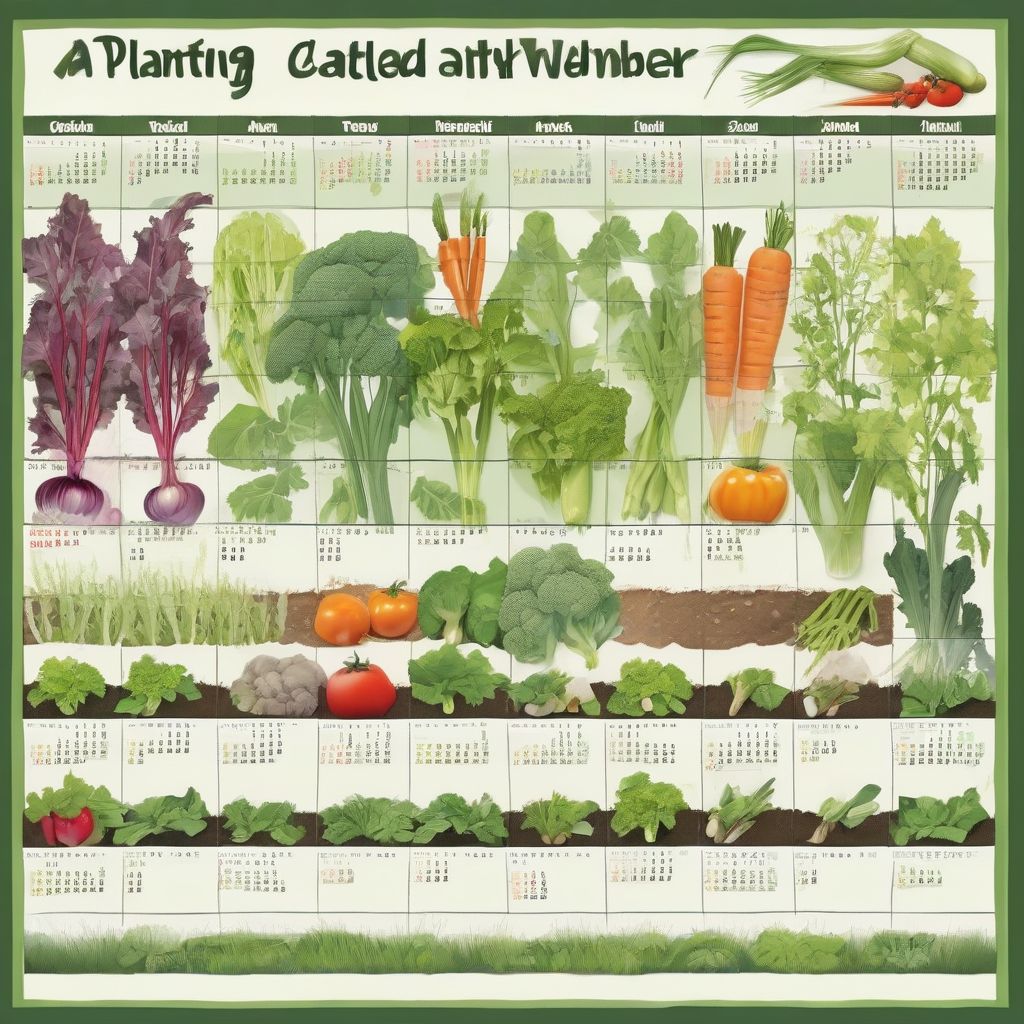Imagine stepping into your community garden, even in the heart of winter, and finding vibrant greens thriving. Year-round community gardening might sound like a dream, but with a little planning and teamwork, it’s entirely achievable. Whether you’re seasoned gardeners or just starting, these tips will help your community garden flourish in every season.
Understanding Your Local Climate and Choosing the Right Crops
The first step to year-round gardening is understanding your local climate. What’s your first and last frost date? How much rainfall do you typically get in each season?
 Planting Calendar
Planting Calendar
Once you have a grasp of your climate, you can select appropriate crops.
- Cool-season crops: These thrive in cooler temperatures and can even tolerate frost. Think leafy greens like kale, spinach, and lettuce, root vegetables like carrots and radishes, and brassicas like broccoli and cauliflower.
- Cold-hardy crops: These can withstand freezing temperatures and can be grown throughout winter in many regions. Try planting garlic, onions, leeks, or even some varieties of strawberries.
- Warm-season crops: These need plenty of sunshine and warm soil. Plant tomatoes, peppers, cucumbers, beans, and squash during the warmer months.
Pro Tip: “Consider using a raised bed or cold frame to extend your growing season for both cool-season and warm-season crops,” advises Master Gardener, Emily Carter.
Extending the Season: Techniques for Success
- Season Extension Tools: Greenhouses, cold frames, and row covers can protect your plants from the elements, extending the growing season for both cool and warm-season crops.
- Succession Planting: This involves planting small batches of crops every few weeks to ensure a continuous harvest. It’s particularly effective for quick-growing vegetables like lettuce and radishes.
- Winter Sowing: Start seeds indoors during the late winter months to get a head start on the growing season. This is an excellent method for starting warm-season crops like tomatoes and peppers.
Soil Care and Maintenance Throughout the Year
Healthy soil is the foundation of a thriving garden.
- Fall Cleanup: Remove spent plants to prevent pests and diseases from overwintering.
- Soil Testing: Test your soil in the fall or early spring to determine its pH and nutrient levels. This will guide your amendment choices.
- Adding Organic Matter: Amend your soil with compost, aged manure, or cover crops in the fall or early spring. This improves soil structure, drainage, and nutrient content.
- Mulching: Apply a thick layer of mulch (straw, wood chips, or leaves) around your plants to suppress weeds, retain moisture, and regulate soil temperature.
Watering Wisely, No Matter the Weather
- Watering Needs: Plants generally need less water in the cooler months. Monitor soil moisture regularly to avoid overwatering.
- Watering Methods: Drip irrigation and soaker hoses deliver water directly to the roots, minimizing water waste and reducing the risk of foliar diseases.
- Rain Barrels: Collecting rainwater is a sustainable way to water your garden throughout the year.
Pest and Disease Management: A Year-Round Effort
- Fall and Winter Clean-up: Remove debris and fallen leaves to reduce overwintering sites for pests and diseases.
- Beneficial Insects: Attract beneficial insects like ladybugs and lacewings that prey on common garden pests. Planting a diversity of flowers can help attract these helpful insects.
- Crop Rotation: Rotate your crops each year to disrupt pest and disease cycles. This is an essential practice for maintaining healthy soil and preventing problems.
- Natural Pest Control: Use natural pest control methods whenever possible, such as insecticidal soap or neem oil.
Community Collaboration for a Thriving Garden
A community garden thrives on shared responsibility and collaboration.
- Shared Tasks: Create a schedule for tasks like watering, weeding, and harvesting. This ensures that the workload is distributed fairly among members.
- Knowledge Sharing: Organize workshops or informal gatherings to share gardening tips, recipes, and seasonal knowledge.
- Celebrations: Celebrate your harvests throughout the year with potlucks, seed swaps, or community meals.
Conclusion: Reaping the Rewards Year After Year
Maintaining a community garden year-round requires dedication, but the rewards are immeasurable. By working together and implementing these tips, you can enjoy fresh, homegrown produce in every season, foster a sense of community, and create a beautiful, productive space for everyone to enjoy.
What are your favorite tips for keeping your community garden thriving year-round? Share your thoughts and ideas in the comments below!
[amazon bestseller=”gardening books”]
